 Overlooked Horror Films Part 7
Overlooked Horror Films Part 7This is an amazing film from 1964 directed by Masaki Kobayashi which was a departure for him as a director. These traditional ghost stories and this movie may be well known in Japan, but there's still quite a few people in the west who have yet to discover this classic masterpiece of Japanese horror cinema.
 The original stories that the the 4 shorts are based on were actually written by Lafcadio Hearn, a folklorist of Greek/Irish ancestry who lived in the US, then moved to Japan and eventually became a naturalized Japanese citizen in 1895 and changed his name to Yakumo Koizumi. What's amazing is that you'd never know the stories weren't written by a Japanese person because it's hard to tell that Kwaidan's source of inspiration was in any way western.
The original stories that the the 4 shorts are based on were actually written by Lafcadio Hearn, a folklorist of Greek/Irish ancestry who lived in the US, then moved to Japan and eventually became a naturalized Japanese citizen in 1895 and changed his name to Yakumo Koizumi. What's amazing is that you'd never know the stories weren't written by a Japanese person because it's hard to tell that Kwaidan's source of inspiration was in any way western.First of all, I'll give you a quick rundown on each of the 4 stories and their plots.
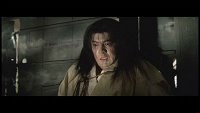 The first story is THE BLACK HAIR, about a samurai who's fed up with being poor, so he leaves his wife and marries another woman of prominence who's family is stinking rich. But soon he longs for the old life and quickly discovers his new wife is a callous heartless bitch. So he returns, and she's still the same as she was when he left. Hmmmmmm. I won't spoil the rest.
The first story is THE BLACK HAIR, about a samurai who's fed up with being poor, so he leaves his wife and marries another woman of prominence who's family is stinking rich. But soon he longs for the old life and quickly discovers his new wife is a callous heartless bitch. So he returns, and she's still the same as she was when he left. Hmmmmmm. I won't spoil the rest.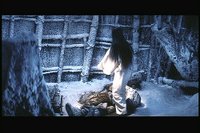 The 2nd story is my favorite, YUKI ONNA, the woman of the snow. This one is about a poor woodcutter who lives in a forbidden frozen forest who gets lost in a blizzard with his companion, so they find shelter for the night in an old nearby shack. During the night he awakes to find a mysterious ghostly but extremely beautiful woman who proceeds to blow an icy breath on his companion, freezing him to death. She almost kills him too, but spares him out of pity, but warns him to never tell about what happened to anyone. Later, he meets a woman and gets married and has 3 kids with her. But everyone is wondering why she can have 3 kids and never seem to age and stay beautiful. Is she really who she seems?
The 2nd story is my favorite, YUKI ONNA, the woman of the snow. This one is about a poor woodcutter who lives in a forbidden frozen forest who gets lost in a blizzard with his companion, so they find shelter for the night in an old nearby shack. During the night he awakes to find a mysterious ghostly but extremely beautiful woman who proceeds to blow an icy breath on his companion, freezing him to death. She almost kills him too, but spares him out of pity, but warns him to never tell about what happened to anyone. Later, he meets a woman and gets married and has 3 kids with her. But everyone is wondering why she can have 3 kids and never seem to age and stay beautiful. Is she really who she seems? Probably the most well-known and popular of these stories is the 3rd one titled HOICHI THE EARLESS. Hoichi is a blind musician who lives in a monastery who loves picking away on his Shamisen and singing about the Heike and Genji clan wars, whose burial ground is very near the monastery. Too close, in fact, that the ghosts demand he do a late night performance for them. He's cool with it, but the head monk starts to notice his late night departures and his failing health and warns him that if he continues, the ghosts will rip him to shreds, so he paints Hoichi's entire body with prayer to ward off any evil spirits. Unfortunately, he forgets to paint Hoichi's ears. OOPS! You can probably figure out the rest.
Probably the most well-known and popular of these stories is the 3rd one titled HOICHI THE EARLESS. Hoichi is a blind musician who lives in a monastery who loves picking away on his Shamisen and singing about the Heike and Genji clan wars, whose burial ground is very near the monastery. Too close, in fact, that the ghosts demand he do a late night performance for them. He's cool with it, but the head monk starts to notice his late night departures and his failing health and warns him that if he continues, the ghosts will rip him to shreds, so he paints Hoichi's entire body with prayer to ward off any evil spirits. Unfortunately, he forgets to paint Hoichi's ears. OOPS! You can probably figure out the rest. The last episode IN A CUP OF TEA, a writer keeps seeing the reflection of another person when he looks into his cup of tea. Soon he confronts the writer in physical form, then soon the spirit is joined by a trio of others. Each time the end results of these duels are futile. I won't tell you anymore.
The last episode IN A CUP OF TEA, a writer keeps seeing the reflection of another person when he looks into his cup of tea. Soon he confronts the writer in physical form, then soon the spirit is joined by a trio of others. Each time the end results of these duels are futile. I won't tell you anymore.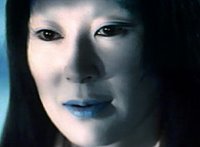 This is probably the most BEAUTIFUL horror film ever made, with everything shot in the studio. The sets were way ahead of their time and still amaze audiences today. Kobayashi went to great lengths to adapt different aspects of Kabuki theatre and Bunraku puppet theatre in his techniques used in this film.
This is probably the most BEAUTIFUL horror film ever made, with everything shot in the studio. The sets were way ahead of their time and still amaze audiences today. Kobayashi went to great lengths to adapt different aspects of Kabuki theatre and Bunraku puppet theatre in his techniques used in this film. 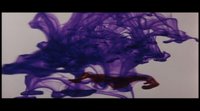 The atmosphere created in this film from the use of color works extremely well especially in THE BLACK HAIR and YUKI ONNA with all the blue hues. All I can say is that Japanese horror has so much more of a different aesthetic than western horror films, and in many cases they are way more effective in scarring your psychological senses and your emotional psyche. The images and sounds haunt you long afterwards.
The atmosphere created in this film from the use of color works extremely well especially in THE BLACK HAIR and YUKI ONNA with all the blue hues. All I can say is that Japanese horror has so much more of a different aesthetic than western horror films, and in many cases they are way more effective in scarring your psychological senses and your emotional psyche. The images and sounds haunt you long afterwards. 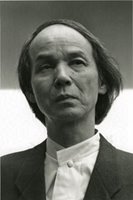 Speaking of the music, famous Japanese film composer Toru Takemitsu provided the brilliantly eerie soundscapes that compliment this film so perfectly. He not only did the music, but did a lot of the foley too. I am a huge fan of Takemitsu's work, especially his film works. There's a 7 CD boxset of his filmworks that should be obtained if at all possible. But as far as I know it's only available in Japan.
Speaking of the music, famous Japanese film composer Toru Takemitsu provided the brilliantly eerie soundscapes that compliment this film so perfectly. He not only did the music, but did a lot of the foley too. I am a huge fan of Takemitsu's work, especially his film works. There's a 7 CD boxset of his filmworks that should be obtained if at all possible. But as far as I know it's only available in Japan.Anyway, if you're looking for a different kind of horror movie that's not the typical modern Hollywood "I know what you did last summer" crapola, you should give this a view. I'll be reviewing some other Japanese horror films in the near future...











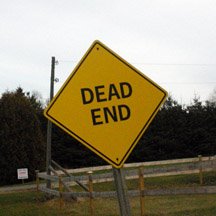











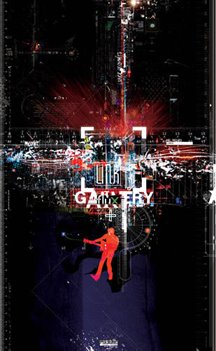


















No comments:
Post a Comment